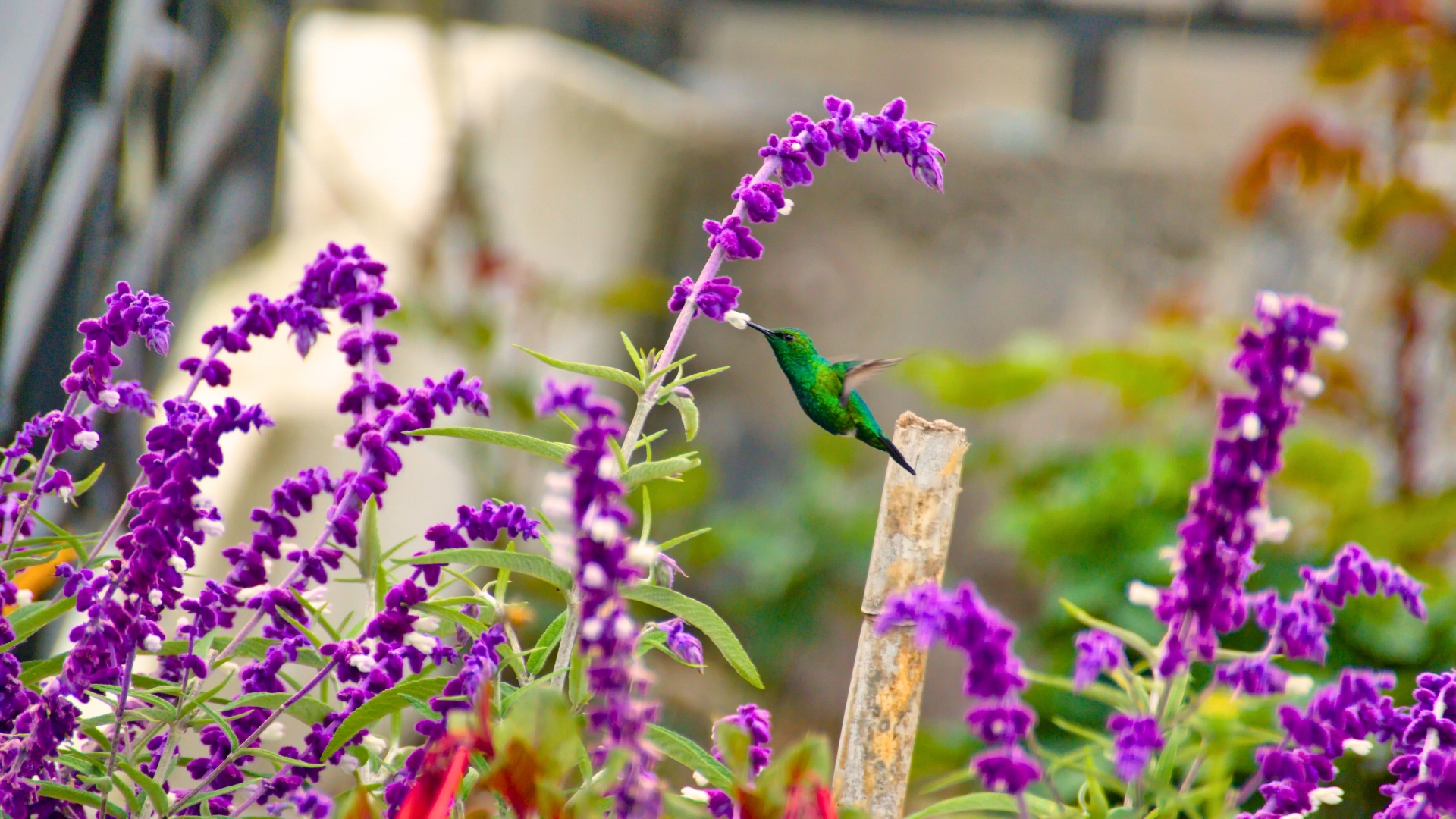Give Hummingbirds A Reason To Visit With These 15 Perfect Companion Plants For Sage
I’ve always loved watching hummingbirds dart around my garden, and planting the right companions for sage really amps up the show. These plants don’t just look great—they bring in those tiny winged visitors like magic.
It’s like creating a little hummingbird hotspot right outside your door. Plus, the mix of colors and scents makes the whole garden feel alive and buzzing.
Here are my top picks to make sage the star of a hummingbird-friendly garden!
1. Bee Balm
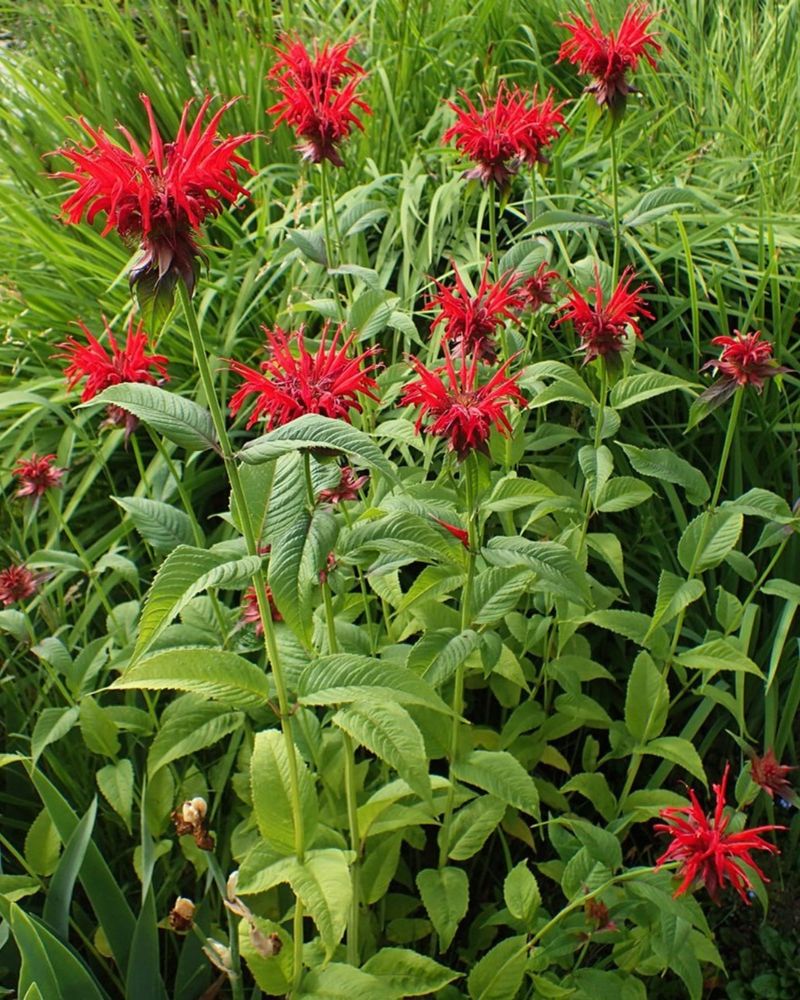
Nothing says “hummingbird magnet” quite like the bright, spiky blooms of this native perennial. The vibrant red, pink, or purple flower heads resemble tiny fireworks and produce abundant nectar that hummers find irresistible.
Bee balm thrives in the same sunny, well-drained conditions as sage while adding height and drama to your garden. The fragrant foliage also deters many garden pests naturally, making it a practical companion that serves multiple purposes in your hummingbird haven.
2. Penstemon
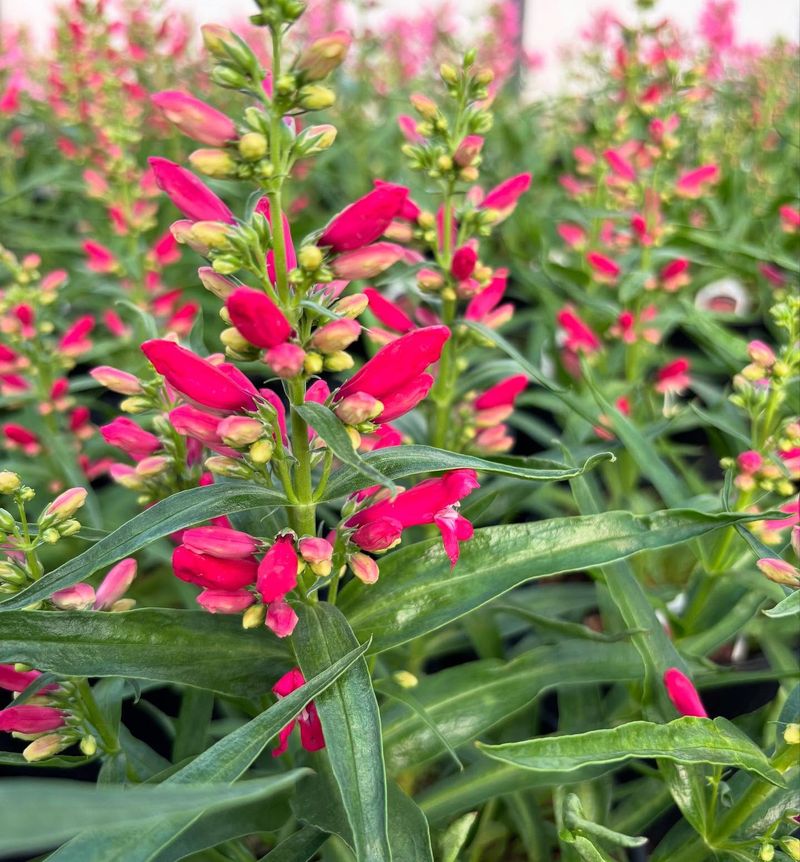
Often called beardtongue, these native beauties produce tall spikes of tubular flowers perfectly shaped for hummingbird beaks. Available in shades from scarlet and purple to pink and white, they create stunning vertical accents alongside sage plants.
Hardy and drought-tolerant once established, penstemons share sage’s preference for well-drained soil and minimal fuss. Their blooming period often extends through summer into fall, providing reliable nectar sources when other plants may have finished flowering.
3. Cardinal Flower
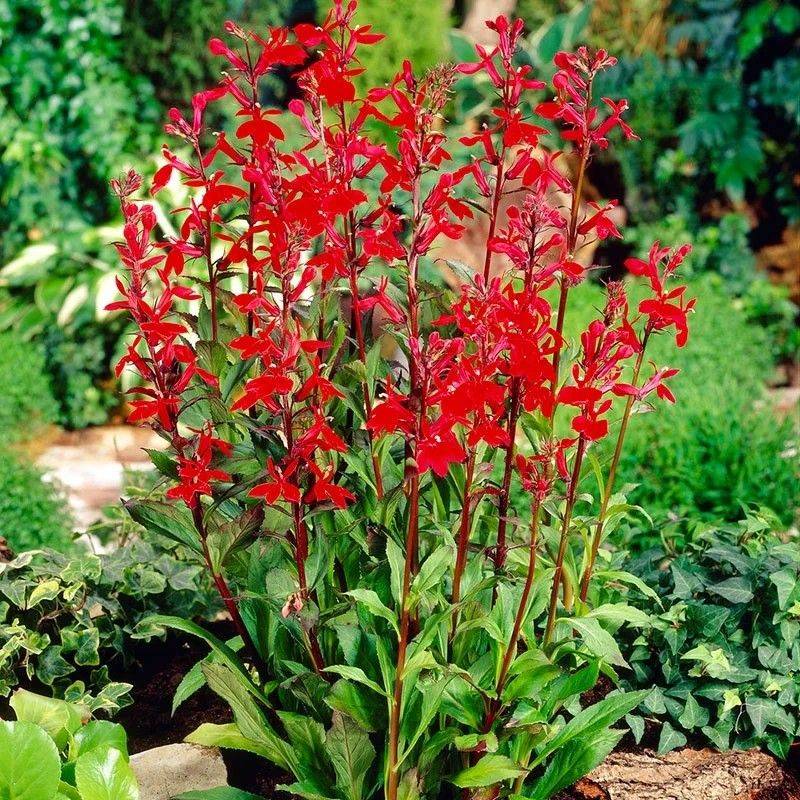
The brilliant scarlet blooms of cardinal flower create a stunning vertical display that hummingbirds simply cannot resist. Unlike many companions, this native wildflower appreciates moister soil than sage, so plant it at the garden’s edge where it gets more water.
Cardinal flower’s intense red color serves as a beacon to passing hummingbirds, drawing them in from impressive distances. The late summer blooming period extends feeding opportunities when many other nectar sources have faded, making it a crucial addition to your hummingbird garden.
4. Columbine
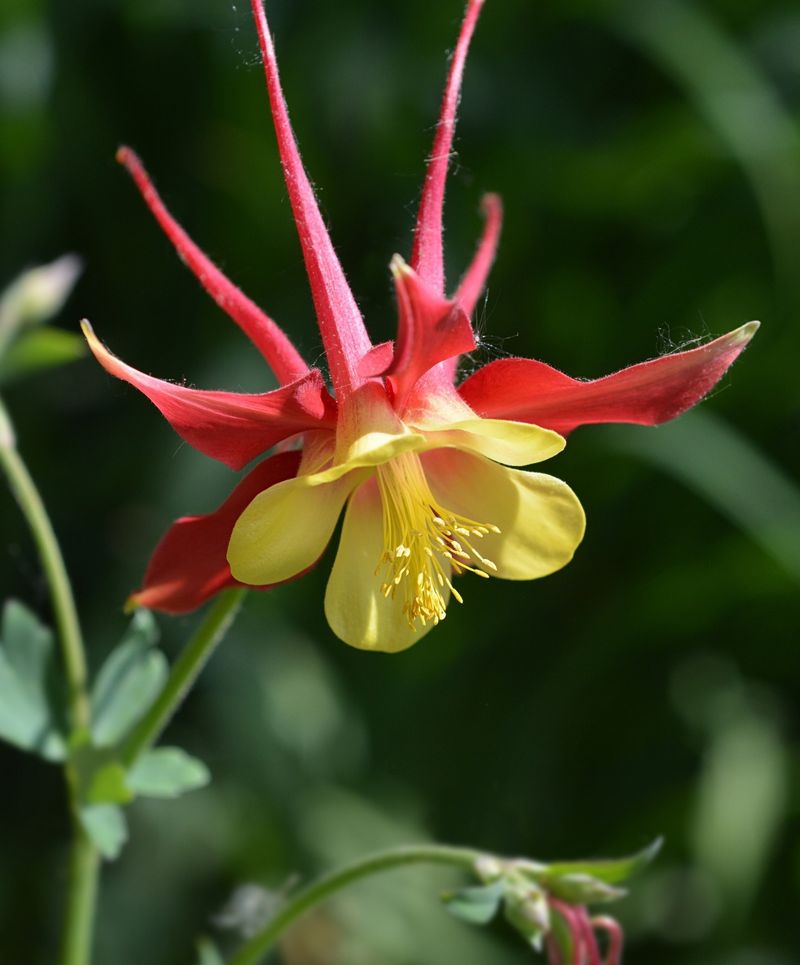
The delicate, spurred flowers of columbine hang like tiny lanterns, perfectly designed for hummingbird feeding. These spring bloomers provide early-season nectar before many sage varieties reach their peak, ensuring continuous food sources for returning hummers.
Columbines thrive in partial shade, making them ideal companions for sage varieties that don’t require full sun. Their ferny foliage creates beautiful textural contrast with sage’s velvety leaves, and they self-seed readily, creating charming colonies that return year after year.
5. Agastache
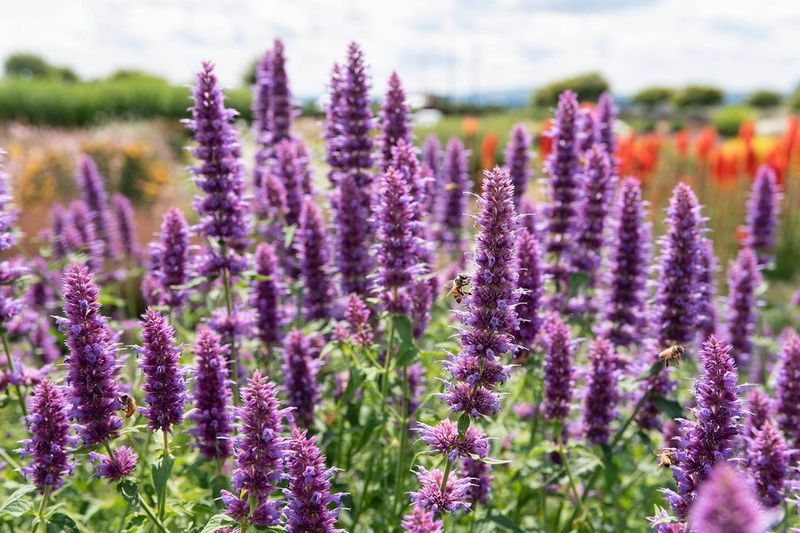
Commonly known as hyssop or hummingbird mint, agastache produces tall spikes of tubular blooms in jewel tones that hummingbirds find irresistible. The anise-scented foliage adds sensory interest while naturally repelling many garden pests.
Like sage, agastache thrives in hot, sunny locations with well-drained soil. Its drought tolerance makes it an excellent low-maintenance companion. The lengthy blooming period from midsummer through fall bridges flowering gaps, ensuring hummingbirds have consistent nectar sources throughout the season.
6. Salvia

While sage itself belongs to the Salvia family, adding different salvia varieties creates a dynamic display that extends the blooming season. The tubular flowers come in an impressive range of colors from cobalt blue to bright crimson, giving hummingbirds plenty of options.
Many salvias bloom earlier or later than common sage varieties, ensuring continuous nectar sources. Their similar growing requirements make them perfect companions that create a cohesive look while attracting hummingbirds with their abundant nectar and bright colors that these tiny birds can spot from far away.
7. Trumpet Vine

For vertical interest and dramatic impact, trumpet vine delivers with its clusters of flared, tubular blooms that seem custom-made for hummingbird beaks. The bright orange-red flowers hang like tiny trumpets, broadcasting their nectar bounty to passing hummers.
This vigorous climber needs strong support and regular pruning to keep it in bounds. Plant it near sage but give it a trellis or fence to climb, creating a multi-level feeding station. The late summer blooms extend the nectar season when many other plants have finished flowering.
8. Foxglove
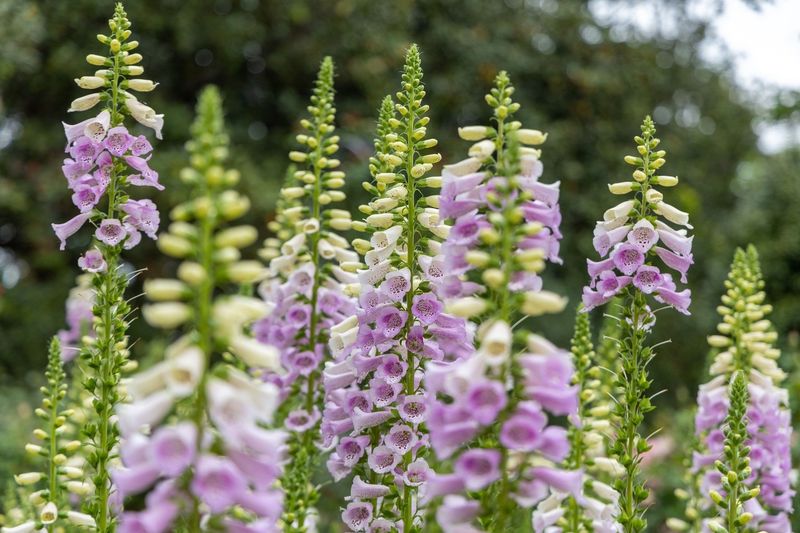
The dramatic spires of foxglove create vertical interest while providing perfect landing spots for hummingbirds to perch and feed. Their spotted, tubular blooms produce copious nectar and come in shades from white and cream to pink and purple.
As a biennial, foxglove seeds itself freely, creating a sustainable colony that returns year after year. Plant it where sage receives afternoon shade for best results. The early summer blooming period often precedes peak sage flowering, extending the nectar calendar for hungry hummingbirds.
9. Fuchsia
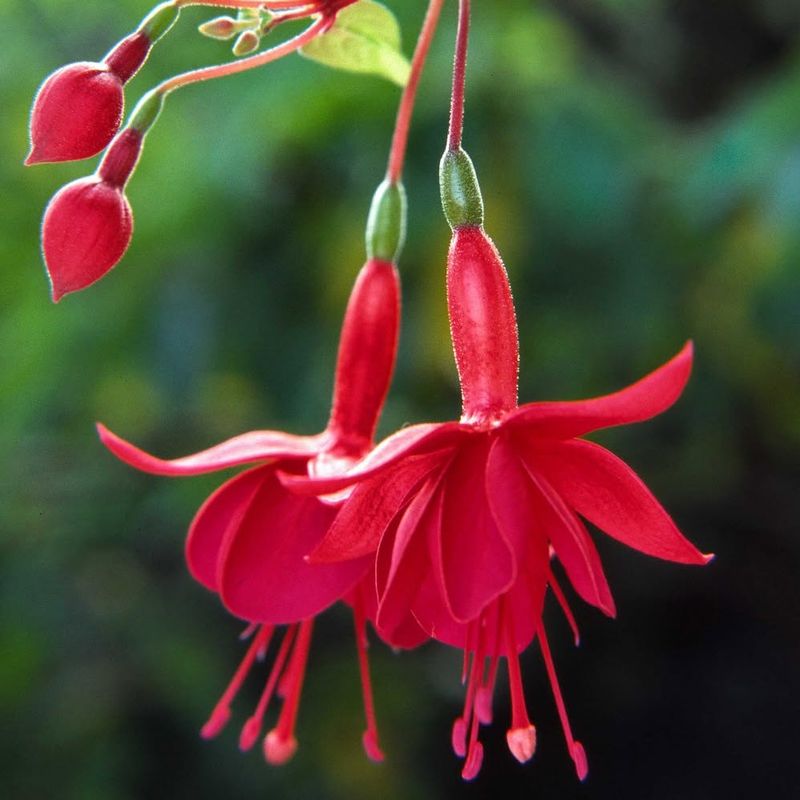
The dangling, lantern-like blooms of fuchsia seem tailor-made for hummingbird feeding. Their bright colors and abundant nectar make them irresistible to these tiny aerial acrobats who can hover perfectly while extracting the sweet reward.
In milder climates, fuchsias can be grown as perennials alongside sage; in colder areas, use them in hanging baskets near sage beds. Their preference for morning sun and afternoon shade complements sage varieties that don’t require full sun all day, creating perfect microclimates for both plants.
10. Coral Bells
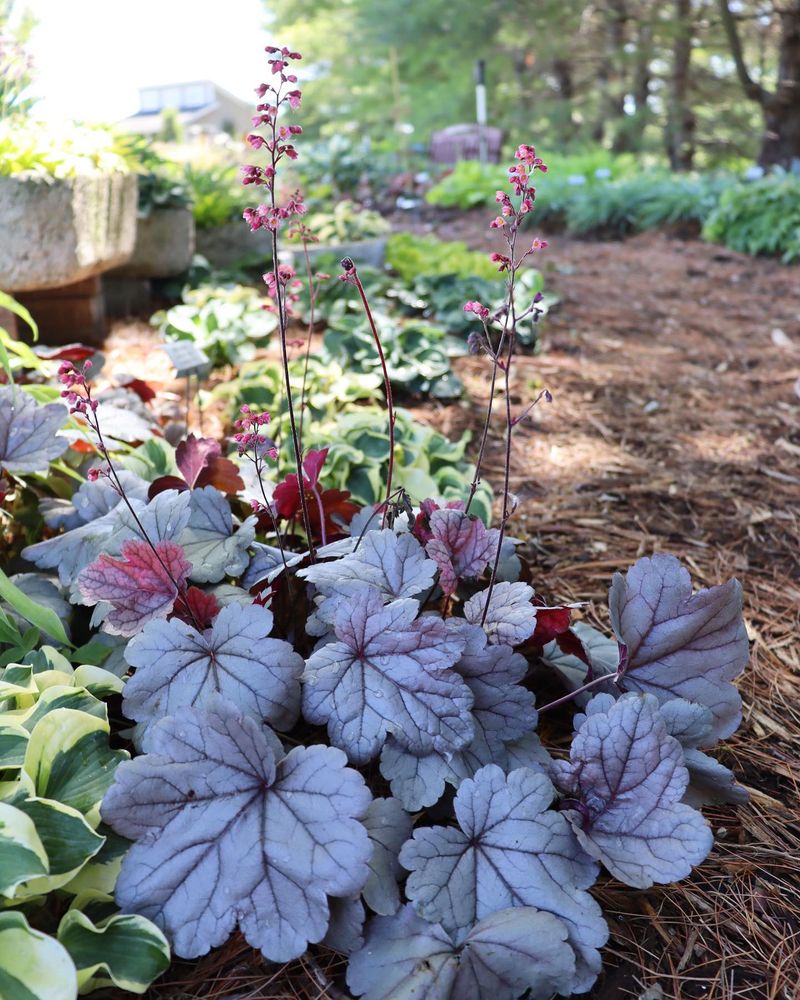
Don’t let their delicate appearance fool you – the tiny bell-shaped flowers of Heuchera (coral bells) produce nectar that hummingbirds eagerly seek out. Their airy flower stalks rise above mounds of colorful foliage that contrasts beautifully with sage’s texture.
Coral bells prefer partial shade, making them perfect companions for sage varieties that don’t need full sun. Their colorful leaves – ranging from burgundy and purple to chartreuse and caramel – add year-round interest even when not in bloom, creating a beautiful backdrop for sage’s flowers.
11. Cuphea

Often called cigar plant or firecracker plant, cuphea produces masses of tubular flowers in hot colors that hummingbirds find impossible to resist. The tiny blooms resemble miniature firecrackers or cigars tipped with white, red, or purple.
Cuphea thrives in the same sunny, well-drained conditions as sage, making them natural companions. Their non-stop blooming from spring until frost provides reliable nectar sources all season long. The compact growth habit makes them perfect for planting at sage’s feet, creating a colorful, bird-friendly border.
12. Red Hot Poker
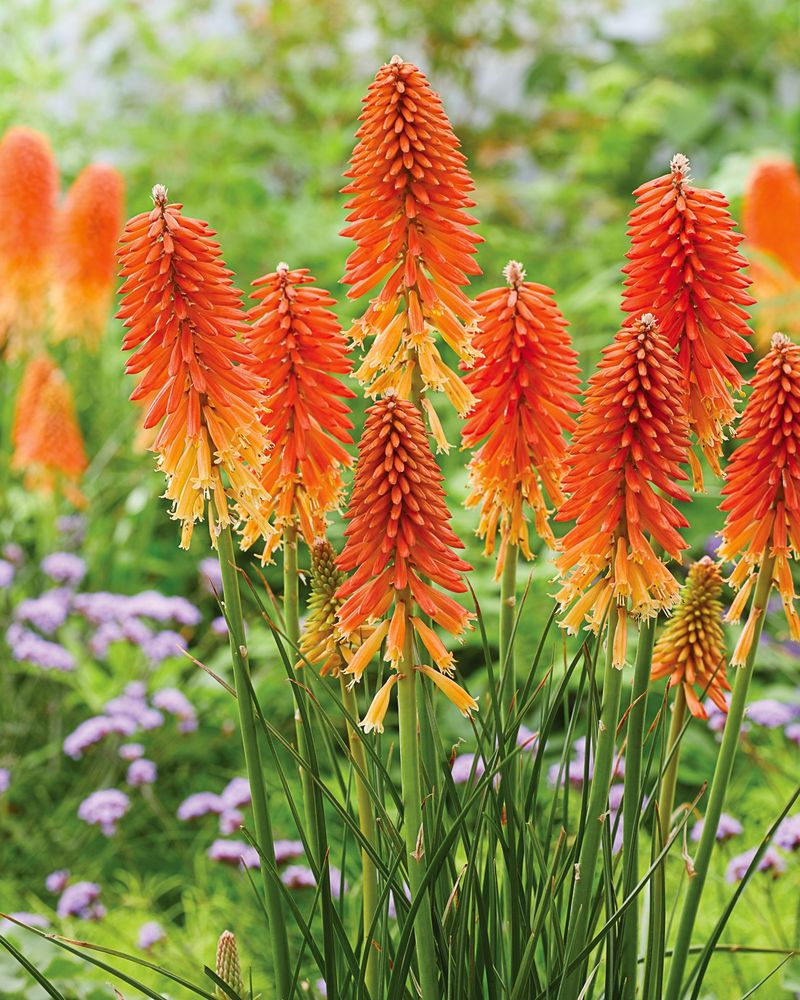
The torch-like flower spikes of Kniphofia (red hot poker) stand tall above grassy foliage, creating dramatic vertical elements alongside sage plants. Their gradient coloration – typically fiery red and orange fading to yellow – acts like a beacon for passing hummingbirds.
These drought-tolerant perennials share sage’s preference for well-drained soil and full sun. Their blooming period often extends through summer when sage may be between flushes of flowers, ensuring continuous nectar sources. The strong architectural form creates stunning contrast with sage’s softer silhouette.
13. Butterfly Bush
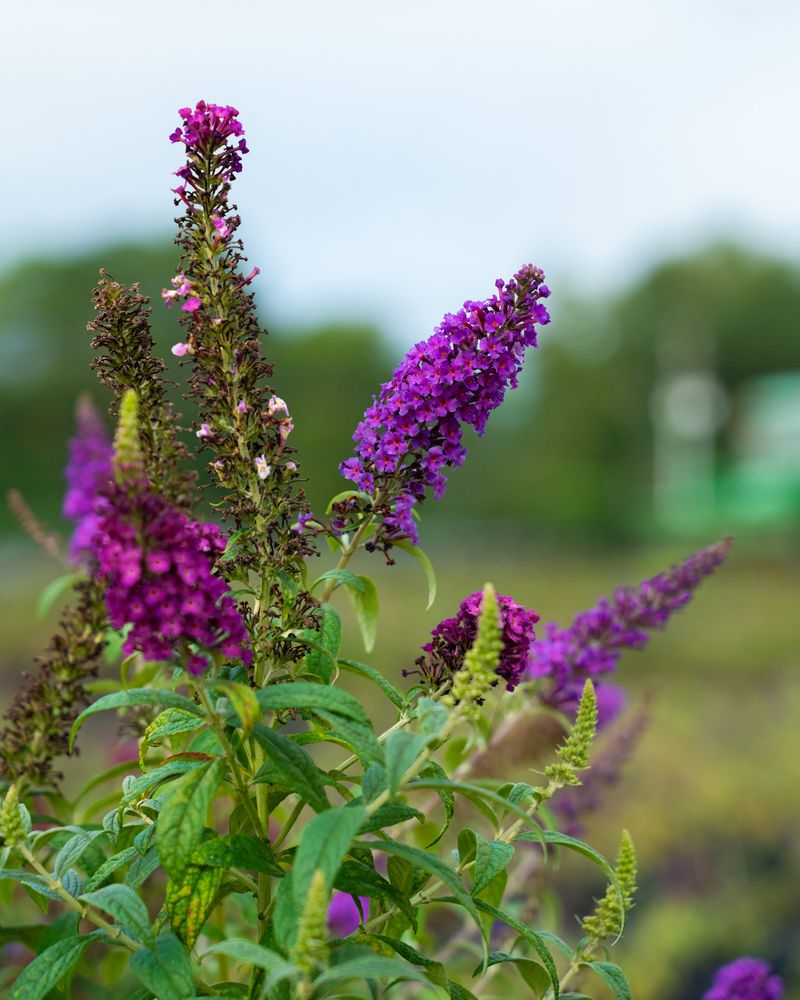
Despite its name, butterfly bush attracts hummingbirds just as effectively with its long panicles of tiny, nectar-rich flowers. Available in shades from white and pink to purple and near-black, these fragrant blooms appear from summer through fall.
Plant butterfly bush behind sage to create depth and layers in your garden. The woody shrub provides perfect perching spots for resting hummingbirds between feeding sessions. Choose compact varieties if space is limited, as traditional types can grow quite large but respond well to pruning.
14. Lantana

The clustered blooms of lantana create colorful landing pads that change hues as they age, often featuring multiple colors on a single flower head. Their abundant nectar production and long blooming period make them hummingbird favorites in warmer regions.
Lantana thrives in the same hot, sunny conditions as sage, making them natural companions. Their spreading habit works beautifully at sage’s feet, creating a colorful groundcover. The fragrant foliage naturally repels many garden pests while the continuous blooms from spring until frost ensure non-stop hummingbird visits.
15. Honeysuckle

The sweet fragrance of honeysuckle vines might attract human noses, but it’s the tubular flowers filled with nectar that bring hummingbirds flocking. The trumpet-shaped blooms in shades of white, yellow, pink, and red are perfectly shaped for hummingbird beaks.
Plant honeysuckle near sage but give it a trellis or fence to climb, creating vertical feeding zones. Choose non-invasive varieties like trumpet honeysuckle for best results. The long blooming period from late spring through summer ensures consistent nectar supplies when hummingbirds are most active.

